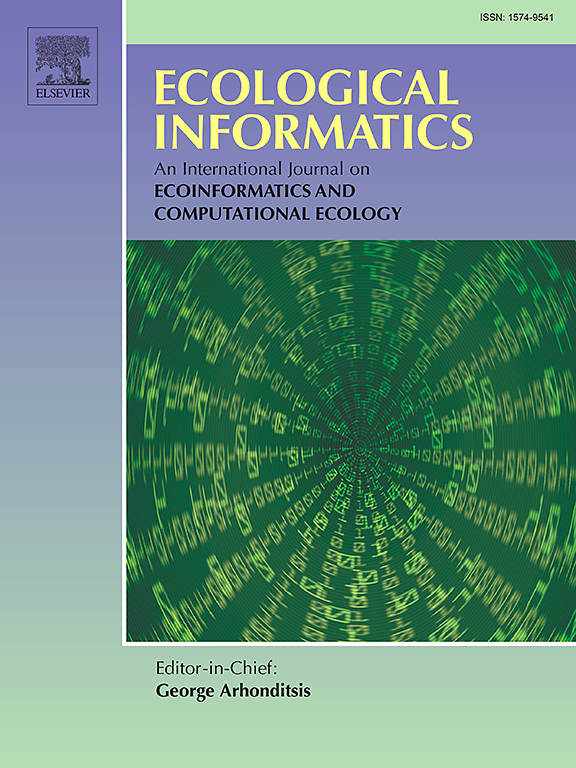Feature engineering on climate data with machine learning to understand time-lagging effects in pasture yield prediction
IF 5.8
2区 环境科学与生态学
Q1 ECOLOGY
引用次数: 0
Abstract
Pastures are a primary food source for livestock in Australia, with various pasture species grown in rotations. Accurate prediction of pasture availability is critical for effective farm management, livestock growth, and maintaining the supply chain. Environmental factors, particularly climate, heavily influence pasture yield. However, different pasture species respond to climate attributes with varying time lags; for example, one species might be more influenced by last week’s weather while another by the previous month’s highlighting the nuanced temporal dependencies. This time-lagging effect complicates the development of machine-learning models that can learn the temporal dependencies to predict pasture yield. To address this, our study proposes an averaging-based feature engineering approach, effectively capturing the varying temporal dependencies across pasture species and also allowing interpretation of the dependencies. Utilizing remote sensing and climate data, covering 196 farms (and 6885 paddocks) across Australia, we applied several machine learning techniques, including XGBoost, random forest, linear regression, deep neural networks, stacking, and bootstrapping. Our results show that incorporating averaging-based feature-engineered climate attributes significantly improves pasture yield predictions, with enhancements of up to 20.28%, 31.81%, and 31.11% across the three evaluation measures, RMSE, MAE, and R, respectively. This approach also enhances interpretability, revealing diverse time-lagging effects on different pasture species. XGBoost-based feature importance analysis further unveils insights into the influence of each climate attribute and its temporal dependencies on pasture yield.

求助全文
约1分钟内获得全文
求助全文
来源期刊

Ecological Informatics
环境科学-生态学
CiteScore
8.30
自引率
11.80%
发文量
346
审稿时长
46 days
期刊介绍:
The journal Ecological Informatics is devoted to the publication of high quality, peer-reviewed articles on all aspects of computational ecology, data science and biogeography. The scope of the journal takes into account the data-intensive nature of ecology, the growing capacity of information technology to access, harness and leverage complex data as well as the critical need for informing sustainable management in view of global environmental and climate change.
The nature of the journal is interdisciplinary at the crossover between ecology and informatics. It focuses on novel concepts and techniques for image- and genome-based monitoring and interpretation, sensor- and multimedia-based data acquisition, internet-based data archiving and sharing, data assimilation, modelling and prediction of ecological data.
 求助内容:
求助内容: 应助结果提醒方式:
应助结果提醒方式:


